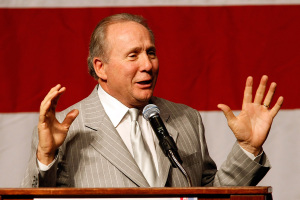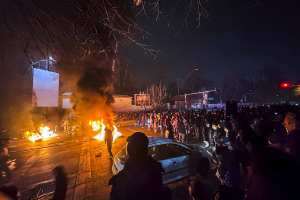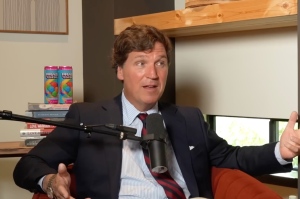First Thanksgiving? How We Got the Pilgrim Story All Wrong

Spoiler: Thanksgiving has not always been about food and football. Perhaps this is not a shocking revelation. Given our steady arc toward holiday commercialization, we have long departed from the origins of this annual event. Still, our Novembers are dotted with the intimations of a historic past: Pilgrims dressed in amusing hats, cornucopias overflowing with food, and, of course, the retelling of the First Thanksgiving.
I had a favorite childhood book that inculcated the First Thanksgiving story into me. And, like most Americans, for most of my life I thought I knew the Pilgrim story. It wasn't until I discovered that my own family lineage pointed back to two of the Mayflower passengers that I took a closer look. Most of what I thought I knew about Thanksgiving was wrong.
To my shock, there was no "First Thanksgiving." The Pilgrims did not combine food with thanks, nor did they start an annual fall tradition. In the 400 years since they landed on the shores of North America, myth and legend have combined two Pilgrim events into a modern holiday concept.
From the Pilgrims' own journals, we learned that, contrary to our images of abundance, the Pilgrims were starving and destitute. They had arrived in "the New World" at the very end of November, after a much-delayed voyage and well past the season to plant a crop. Slightly more than half of the original 102 passengers survived the first winter. With the aid of Squanto (who, contrary to our modern portrait of a hero, befriended the Pilgrims with the strategy of inciting a regional war), the Pilgrims harvested a small crop the following fall.
This initial harvest was a cause for celebration: the Pilgrims had survived a seasonal cycle and could likely stave off another winter. They threw a harvest festival joined by a newly-allied Indian tribe. This Pilgrim party was a non-religious event and by no means a Pilgrim invention. Biblical times record the Festival of Harvest and the Festival of Booths as means of celebrating the yield, and likely since the dawn of man have humans reveled in their first fruits. And celebrate the Pilgrims did; they gorged themselves. Upon inventorying their remaining food stores, the dwindled stock forced a rationing program.
Two years later, a severe drought had withered the Pilgrim crop to brink of failure. By mid-July, their predicament seemed hopeless, save a miraculous turn of events. If the crop failed, they would surely starve. They had sailed for North America to freely worship as they pleased, and in their darkest hour they turned to God. The Pilgrims gathered together for a "day of Thanksgiving" to pray and ask God for deliverance. They began in the morning and as the day of prayer proceeded, clouds began to billow up on the horizon. By afternoon, warm summer rains fell upon them, replenishing the land and fortifying their faith. They had witnessed a miracle and near perfect weather followed the rest of the summer.
Two-hundred years after the Pilgrims' arrival, these events began to fuse together into the likeness of today's holiday. Sara Josepha Hale, who had risen to distinction as the author of "Mary Had a Little Lamb," published a novel featuring the fall tradition of Thanksgiving. She began lobbying state and federal officials to create a national day of thanks. By 1854, thirty states had adopted her suggestion. Eventually, the concept caught the attention of President Abraham Lincoln who, at the close of the Civil War, wanted a national event to promote unity and heal wounds. In 1863, Lincoln formally institutionalized Thanksgiving as a national holiday on the last Thursday in November.
The "First Thanksgiving" is not our only misconception. The entire Pilgrim story has digressed toward a sanitized, comfortable stereotype. Perhaps our most severe oversight has been to divorce the story from its religious origins. The Pilgrims left Europe to escape persecution on account of their faith. They simply wanted to worship when, where, and how they saw fit, instead of under the prescription of church-state order. Many died or left their families for the cause. The Pilgrims then took an incredibly daring risk to cross the Atlantic to an uncharted land. They knew many in their number would die and, in fact, proceeded another group of would-be Pilgrims who did. It was a courageous adventure.
The true story of the Pilgrims serves a cautionary tale for today. The Pilgrim's purpose was to seek a refugee for the freedom to worship. In this spirit, the Founding Fathers prioritized freedom of conscience and made it a hallmark of our nation. In much the way that we lost this part of the Pilgrim story, we risk losing this core of our national story. As we narrow our doors to the plight of the refugee and ponder religious tests for entering our borders, we edge closer to the digression that sterilized the Pilgrim spirit. Instead of food and football, Thanksgiving should serve as a reminder that America is exceptional for its freedom of belief. We may worship how we want, and if we want, without fear or government oversight. This is the Thanksgiving story; and this is truly something for which to be thankful.



























